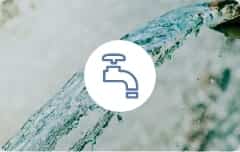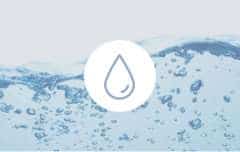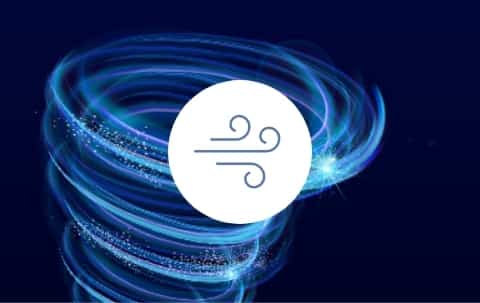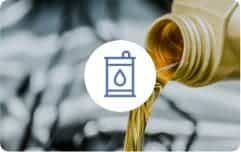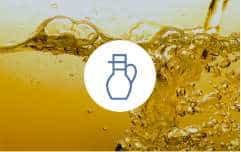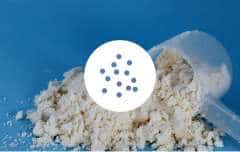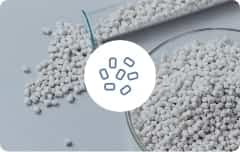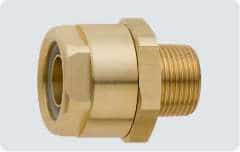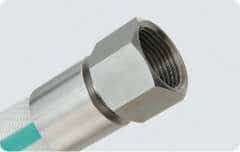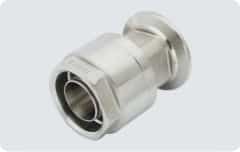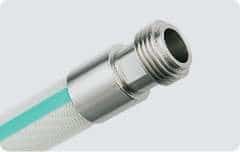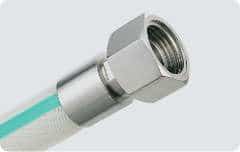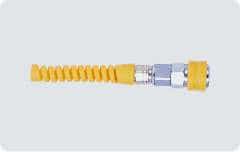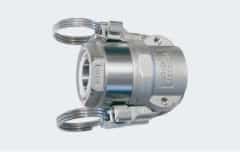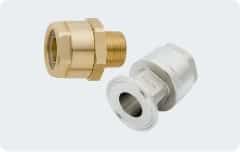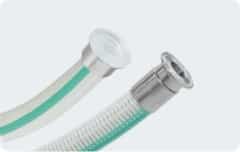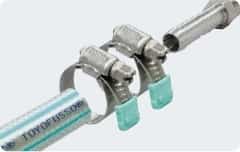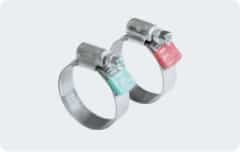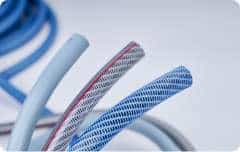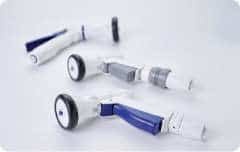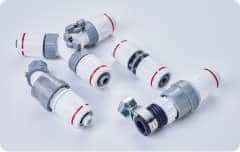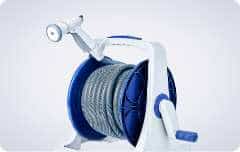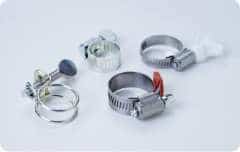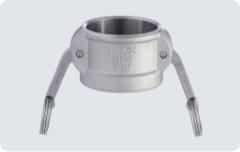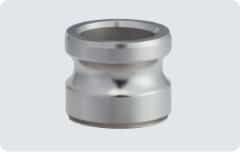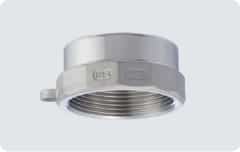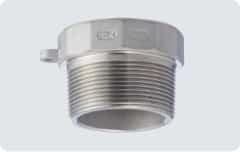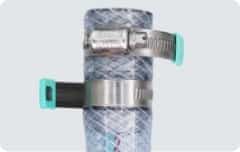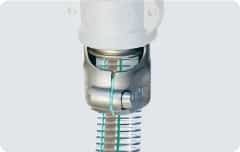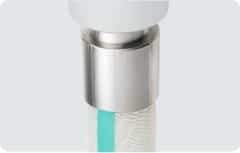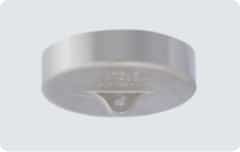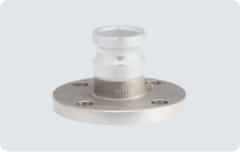FAQ
FAQ


FAQ
Search criteria
Product type
hose
Search results
44matches
- Q A round hole like a crater appeared in the hose while in use. Please tell me the cause so I can avoid this kind of problem in the future. Function and performance
-
A.
Pinholes likely formed in areas where the hose material had softened and weakened due to high temperatures. If a pinhole rupture occurs, first check whether the fluid and atmospheric temperatures are within the operating temperature ranges for the hose you are using. If operating temperature ranges are exceeded, take measures such as switching to a heat-resistant hose with a more suitable temperature range. Feel free to contact Toyox for assistance in making a selection.
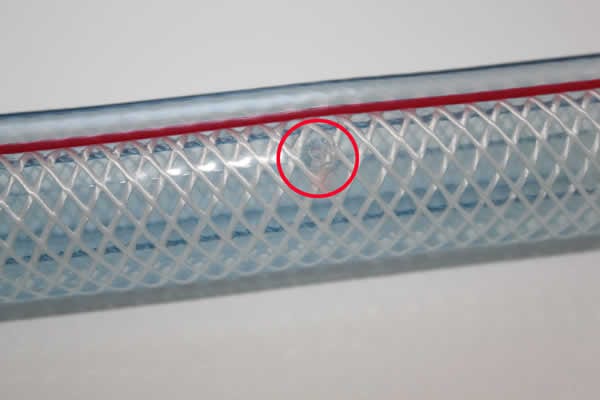
- Q How should I cut a Toyox hose, and what tools will I need? Service
-
A.
The cutting method will differ depending on the thickness and type of the hose. We demonstrate some of the various methods and tools in our video “How to Cut a Toyox Hose.”
- Q What is the reinforcement material used in the TOYOFOODS-S? Will it rust? Specification
-
A.
The reinforcing material of the TOYOFOODS-S Hose is made of hard iron wire that’s prone to rusting. Avoiding wetting the ends while using the hose. Contact us for products that use a rust resistant reinforcing material.
- Q I tried using a plastic air hose taken from storage in the warehouse, but the hose fell apart and was unusable. Since I’ve only used it once or twice, does this mean the product is faulty? Function and performance
-
A.
In the case of polyurethane air hoses, one possible cause could be its storage in a humid warehouse for a long period of time. Although polyurethane hoses are lightweight, abrasion resistant, and oil resistant, if exposed to high temperatures and humidity for long periods of time, a phenomenon called hydrolysis can occur, which causes the entire hose to become brittle. Furthermore, although Toyox polyurethane air hoses (e.g., HITRUN and HIT Hose) are made using a urethane material that is resistant to hydrolysis, we recommend hoses be stored in a well-ventilated place subject to low temperatures and humidity.
- Q Do the hoses have specific service life? I want to manage the hose replacement schedule. Function and performance
-
A.
No service life is set for our hoses. Since many usage conditions such as fluid type, operating temperature, operating pressure, hose size and length are involved and the hoses are used in a wide variety of environments, it is not possible to set a specific service life. Make arrangements based on the actual piping conditions at your company.
- Q The PVC hose currently used is not heat resistant and the hose often needs to be replaced. Are there hoses that last for a long time when using hot water of about 80℃? Function and performance
-
A.
If a normal PVC resin hose is used with food, hot water and cleaning agents at 60℃ or higher, the hose will harden, which may lead to problems such as leakage and disconnection of the hose coupling. Depending on the pressure of food, hot water, etc., we offer hoses according to applications and usage conditions such as those that can be used up to 70℃ and 150℃. Select a hose that meets the operating conditions.
- Q Do you offer any couplings for TOYORON Hoses with inner diameters of 22ø and 45ø? Specification
-
A.
Originally, TOYORON Hoses with inner diameters of 22ø and 45ø and SUPER TOYORON Hoses with inner diameters of 22ø and 48ø were made into standardized sizes based on the assumption that they would be directly inserted into 15A and 40A hard pipes (steel pipes, PVC pipes). Therefore, there are no compatible threaded hose nipples available on the market. Furthermore, TOYOCONNECTOR is a dedicated coupling for Toyox hoses, but there are no products available compatible with its size.
- Q Can sodium hydroxide (caustic soda) be run through the TOYOSILICONE Hose? Fluid
-
A.
Solutions of sodium hydroxide (caustic soda) should generally not be run through the TOYOSILICONE Hose as it can cause degradation of the hose. For CIP (cleaning in place), however, a dilution of 2 to 3% may be used without problems. The TOYOSILICONE has even been used by a CIP equipment manufacturer. Even so, this will result in quicker degradation than using water or air.
- Q Is the hose softer as the minimum bending radius is smaller? Specification
-
A.
Smaller minimum bending radius doesn’t necessarily mean it is softer. Although it is a measure of softness, it is not absolute. For example, the bend radius is TOYOSPRING < TOYORON, but in this case TOYORON feels softer. The softness varies depending on the thickness, material and reinforcement structure. Select an appropriate hose with reference to the deflection data and product samples.
- Q I measured the size of the hose I’m currently using with a vernier caliper and it’s approximately 20 mm. I’m thinking of getting a hose that also has an inner diameter of 20 mm. Is that ok to select the same size? Specification
-
A.
For used hoses, the ends used for connecting may have become deformed to fit the size of the hose nipple (coupling), and the hose’s overall inner diameter may have increased due to piping internal pressure. Therefore, even if you measured the used hose with a vernier caliper, a slightly different size may be required. To find a hose, refer to the Hose Selection Guide or the specifications table on the Toyox website and select a hose that is thinner and closer to the inner diameter size. Feel free to contact Toyox for assistance in making a selection.
We provide a wide range of support from selecting ideal products for specific usage conditions to downloading certificates regarding laws and regulations, as well as downloading of materials such as catalogs.
You can download useful materials that address issues such as “leaks and disconnections”, “energy-saving measures”, and “odor and coloration.”
We use videos to introduce the benefits of using products and how to install them, which may be difficult to understand just using text and illustrations.
We have compiled frequently asked questions from customers in the “FAQ” section.
To assist you in making selections, we provide common examples of improvements for hoses and couplings through industry-based case studies.

